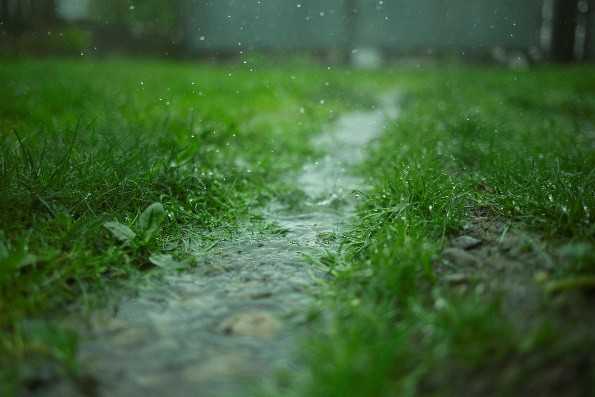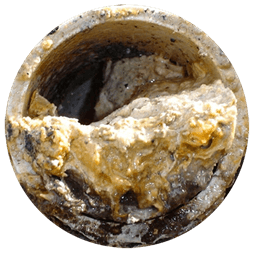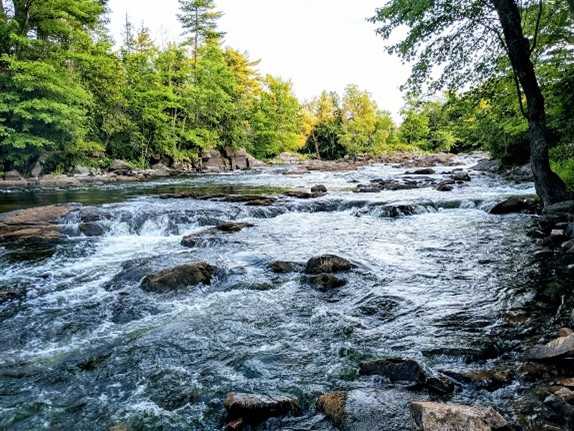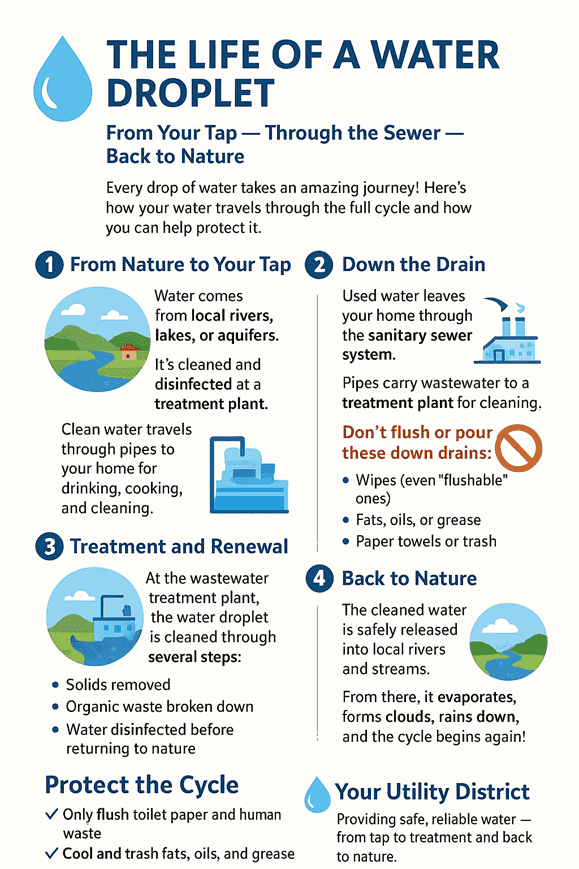Every drop of water that comes from your faucet has been on a long and remarkable journey. From nature to your home, through the sanitary sewer system, and back again — it’s a continuous cycle that keeps our communities healthy and our environment thriving.
Here’s how it all happens.
1. From Nature to Your Tap
Our droplet begins its journey in nature — in rivers, lakes, or underground aquifers. It’s collected and sent to a water treatment plant, where it’s carefully cleaned and disinfected. During treatment, sediment and impurities are removed, and the water is tested to ensure it meets state and federal safety standards. Once it’s ready, the droplet travels through miles of pipes to homes and businesses, where it’s used for drinking, cooking, cleaning, and more.

2. Down the Drain
When the droplet leaves your sink, shower, or toilet, it doesn’t just disappear. It enters the sanitary sewer system, a network of underground pipes that carry used water (called wastewater) to the nearest wastewater treatment plant.
This is where our droplet’s next transformation begins — but it depends on all of us to keep the system flowing properly. Items like **wipes, fats, oils, grease, and trash * can clog pipes and damage pumps. Only water, human waste, and toilet paper should go down the drain.

3. The Sewer System Journey
Protecting the Cycle
Every person plays a role in keeping this cycle clean and efficient. Here’s how you can help:
• Don’t flush wipes, paper towels, or trash. Even “flushable” wipes can clog pipes. • Never pour fats, oils, or grease down the drain. Let them cool and throw them in the trash. • Use water wisely. Simple habits—like only running dishwashers and washing machines with full loads or turning off the tap while brushing your teeth—can add up to big savings for our community and the environment.

Your utility district works hard every day to make sure every drop of water — from tap to treatment and back to nature — is safe, reliable, and sustainable. Together, we can protect this vital resource for generations to come.
The droplet travels through underground pipes, assisted by gravity and pump stations, making its way toward the treatment plant. Along the way, it joins water from thousands of other homes and businesses.
If blockages or leaks occur, it can cause backups or spills — which is why proper disposal and system maintenance are so important.
4. Treatment and Renewal
At the wastewater treatment plant, the droplet is cleaned through several stages before being released back into the environment.
• Primary Treatment: Large solids and debris are removed.
• Secondary Treatment: Microorganisms naturally break down organic matter.
• Tertiary Treatment: The water is disinfected to remove any remaining bacteria or viruses.
After treatment, the droplet is clean and safe once again.

5. Back to Nature
The treated water is released into local waterways, where it becomes part of the natural water cycle once more. It may evaporate into the atmosphere, form clouds, fall as rain, and eventually return to rivers, lakes, or aquifers — starting the entire process over again.
This endless cycle keeps our community supplied with fresh, safe water year after year.


